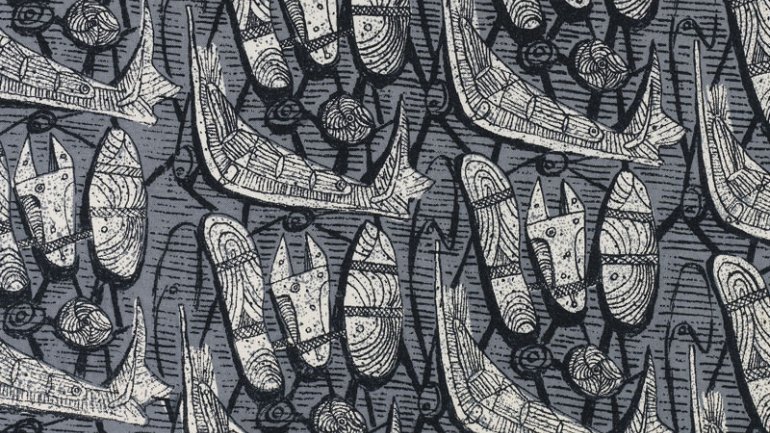Henry Moore Textiles
Henry Moore Textiles
The British sculptor Henry Moore is known worldwide for monumental works in organic shapes, often inspired by stones, bones and seashells, and also for his haunting drawings (1940-42) of Londoners enduring the Blitz. What is less known, is that starting in those same World War II years, at the instigation of a small textile company headed by Czech émigrés Zika and Lida Ascher, Moore created designs for textiles, some of which were produced as head scarves and others as dress and upholstery fabrics, such as Horse's Head and Boomerang, 1944-45, and some in large-scale panels.
This book reproducing and interpreting the designs, many from Moore's sketchbooks, is a revelation. His designs incorporated industrial motifs, such as barbed wire, sea creatures, surrealist images such as clock hands and figures that relate to his sculptures. In addition to the quirky imagery, the designs are notable (and surprising in light of his monochromatic sculpture) for their vivid colors in unusual combinations.
Sue Prichard, curator of contemporary textiles at the Victoria & Albert Museum, discusses these textiles as part of the quest to develop a distinctive British design in the early 20th century, while Anita Feldman, curator of the Henry Moore Foundation (where the textiles are on display until October), analyzes the designs in relation to his social beliefs. "The textiles are intricately connected to Moore's aims as a post-war artist," she writes, "particularly as a Socialist who believed that modern art should be a part of daily life and that art could act as a cohesive force in society." Bearing out such notions of social relevance, photographs show these textiles being worn-in particular, a still of an actress in a 1947 film wearing a dressing gown in Moore's Barbed Wire fabric evokes, for those old enough to remember, the postwar years.




